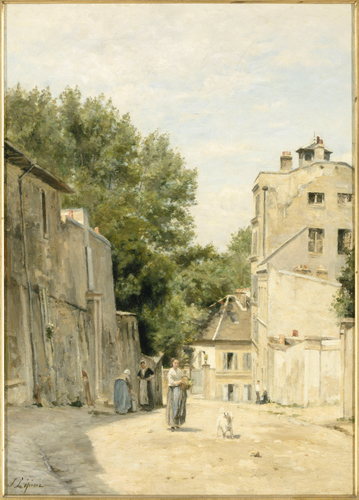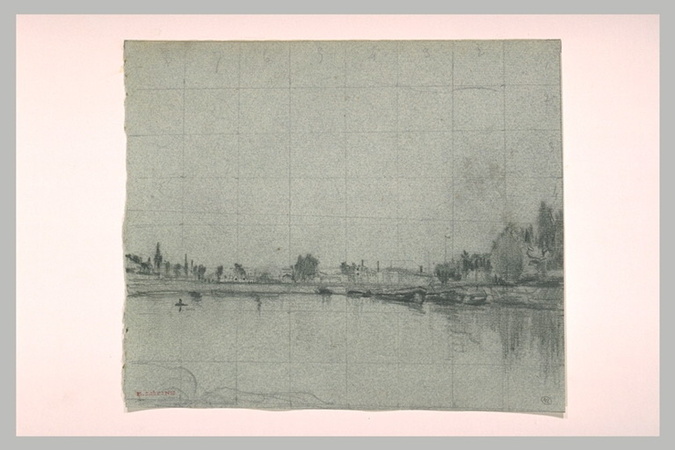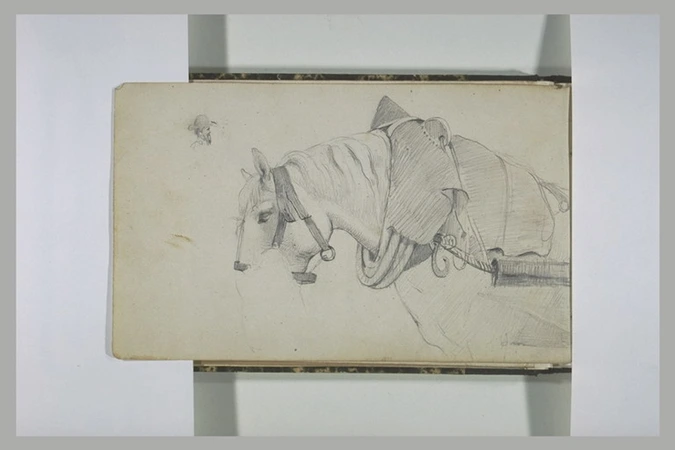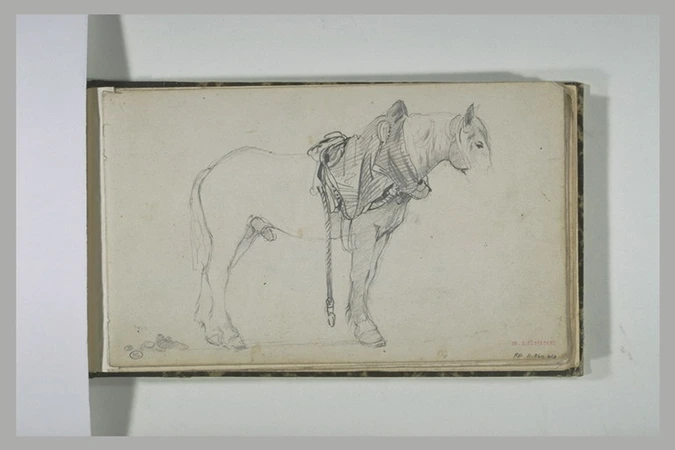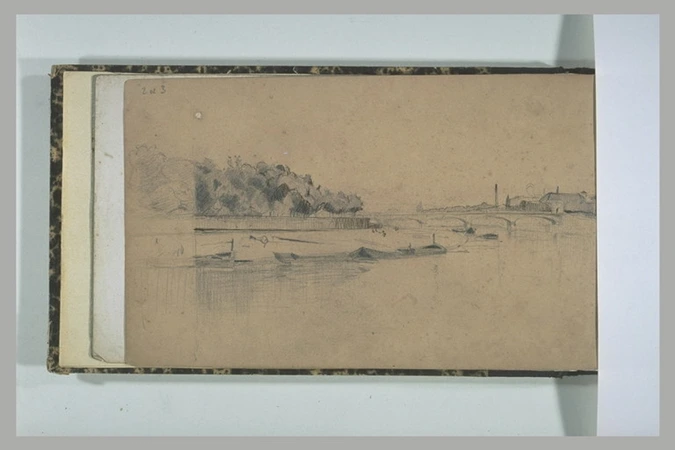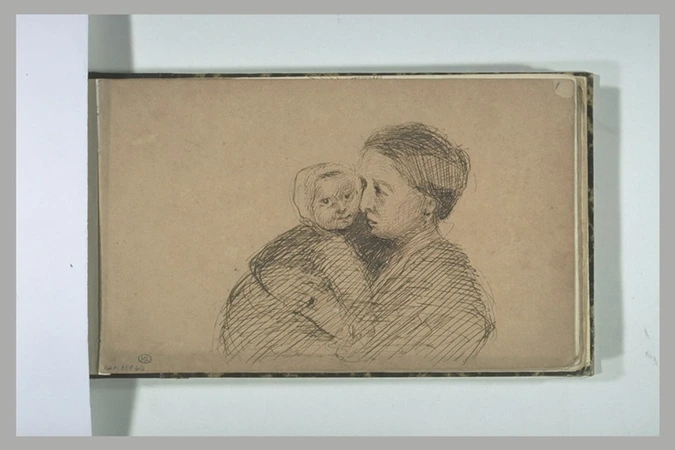Paysage
Given the very low position of the horizon in this Landscape, it is very probable that Lépine set his easel up at the waterline to paint this picture. In doing this he was following Daubigny's example who, in 1857, had a boat converted into a studio so that he could produce his sketches in the heart of the countryside and from different points of view. A viewpoint like this changes the spatial organisation of the painting, as it noticeably lowers the vanishing point.
The precision of Lépine's panoramic composition is exemplary. The foreground is given over to the water, the upper part of the canvas to the sky. From each side, the river banks and their reflections move diagonally towards a central point on the horizon.
In order to animate this severe geometry, the darker left side is cut off before reaching the theoretical central point. The other bank, more varied but also lighter, catches the light of the setting sun, revealing this area in great detail. In the section taken up by the water, several boats placed at regular intervals increase the illusion of perspective, a fundamental rule in any landscape since the Renaissance.
But although the lines of the composition conform to tradition, the colours and method of applying them, is far from classical. The light no longer unifies the surfaces, but, on the contrary, it isolates basic units that have their own colour and their own tone. Thus, in the wavelets in the foreground, one can see many shades of blue, as well as greens and browns. Furthermore, Lépine's technique, applying the paint with the tip of the brush, brings out the transience of the moment throughout the picture.
A few years later, the future Impressionist painters would look at paintings like these, and bring totally innovative developments to this still-hesitant experimentation.




